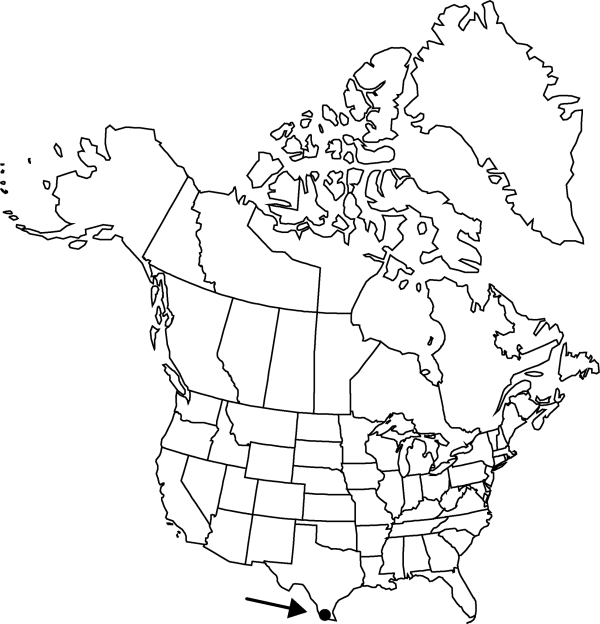Celosia palmeri
Proc. Amer. Acad. Arts 18: 143. 1883.
Shrubs, perennial, ± 0.3–1 m; rootstock stout. Stems erect or clambering, much-branched from rootstock, mostly glabrous. Leaves: petiole 0.5–2 cm; blade somewhat hastately lobed, lanceolate to ovate-lanceolate, 2–4.5 × 0.5–1.7 cm, base long-tapering, apex acute to acuminate or rounded-mucronate. Inflorescences compact panicles of few terminal or axillary spikes near the tips, becoming more open in fruit, units less than 10 mm diam. Flowers: tepals whitish with reddish base, striate, drying tan, darker in middle, ± equal, 4–5 mm, rather rigid, glabrous or occasionally sparsely villous; style 1 mm; stigmas 2. Utricles 4–6 mm. Seeds 3–5, 0.8–1.3 mm diam., faintly reticulate or smooth.
Phenology: Flowering summer–winter.
Habitat: Brush-covered, rocky-gravelly hills
Elevation: 0-30 m
Distribution

Tex., Mexico (Coahuila, Nuevo León, San Luis Potosí).
Discussion
In the original description, S. Watson indicated that Celosia palmeri occurs in “western Texas and northeastern Mexico.” Celosia palmeri has been reported from Cameron County, Texas (C. F. Reed 1969b) and the trans-Pecos region of Texas (C. F. Reed 1970). We have been able to confirm its occurrence only in the south Texas plains region. Herbarium specimens of C. palmeri are typically paler green than those of C. nitida.
Selected References
None.